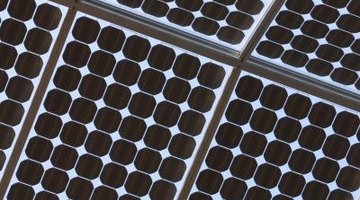The Advantages & Disadvantages of a Solar Pond
Garden ponds add life and interest to a garden or backyard area, but pond pumps, filters and lighting require power to operate. Typically, pond equipment runs on electricity from the utility grid and must be plugged into an outlet, but this is not the only choice. Another option for backyard pond power is solar energy. Plants in ponds use solar energy to grow, and now pumps in manmade ponds can rely on solar energy as well.
Cost-free Operation


Solar-powered ponds are essentially free to operate. They do not add to your utility bill because all the power required for operation is generated by a solar panel that uses free energy from the sun. After the initial cost of installing a solar pond system, the solar panels will generate free power for decades before they require replacement. Additionally, maintenance for these systems is generally simple and low-cost. Although the initial cost of a solar pond is usually higher than that of a traditional system due to the additional solar panel component, they are still affordable. Average solar pond kits cost between $60 and $200 or more as of April 2011. The majority of the cost goes into excavation and construction, not the actual solar panels.
Environmentally Friendly

A pond powered by solar energy instead of electricity does not contribute to the environmental harm associated with other power sources, particularly coal and nuclear power. Solar-generated electricity does not cause greenhouse gas emissions, which contribute to global climate change. Solar power generation does not cause acid rain and water pollution from heavy metals the way coal-sourced electricity does. Additionally, solar systems do not use up valuable water resources in order to generate power as both coal and nuclear plants do.
Flexibility of Location
Solar ponds are not limited by proximity to an electrical outlet. They can be located anywhere that is suitable for building a pond, regardless of the distance to the nearest power outlet, as long as there is access to direct sunlight near the pond site. Also, because they do not plug into an electrical outlet, they require fewer unsightly wires to manage and hide from view. Fewer wires means a reduced installation cost, since you do not have to bury any electrical wires.
Sunny Location
The main disadvantage of solar ponds is that they require solar access to operate. If a site is mostly shaded by tall trees or is on the shaded side of a building, it may not be a good candidate for solar power. The pond itself does not need to be in the sun, but an adjacent location that receives full sun is necessary for the solar panel. Another drawback is that the solar panel is often visible and may be an eyesore. It is difficult to hide from view because it needs to be out in the open where it can collect as much solar energy as possible.
References
Writer Bio
Cora Wilder began her writing career in 2011, specializing in renewable energy, green home repair and home energy conservation. She holds a Bachelor of Science in geology from Colorado State University and a Master of Architecture from Arizona State University.
Photo Credits
- Ryan McVay/Photodisc/Getty Images
- Hemera Technologies/AbleStock.com/Getty Images
- Jupiterimages/Photos.com/Getty Images
More Articles



